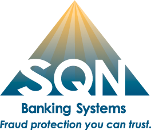 According to a 2015 study published by Lexis Nexis, every $100 of fraud costs the merchant $223. This staggering statistic makes it clear that fraud prevention should be at the top of every financial institution’s priority list. However, the same study reports that fraud itself has increased – in 2012, 170 fraudulent transactions were attempted against merchants in the study pool, while in 2015, an astounding 333 fraudulent transactions were attempted.
According to a 2015 study published by Lexis Nexis, every $100 of fraud costs the merchant $223. This staggering statistic makes it clear that fraud prevention should be at the top of every financial institution’s priority list. However, the same study reports that fraud itself has increased – in 2012, 170 fraudulent transactions were attempted against merchants in the study pool, while in 2015, an astounding 333 fraudulent transactions were attempted.
The study goes on to show that although more transactions are being prevented, financial institutions are still experiencing loss. In 2015, out of the 333 fraudulent transactions that were attempted, just under half were actually completed (156). Only 177 were prevented.
As of 2024, check fraud is still increasing, and financial institutions are incurring millions in individual losses and billions in collective losses. There’s a clear need for fraud prevention in the financial services industry, but many institutions have difficulty visualizing how they can take steps towards reducing the cost of check fraud.
Manual Review vs. Automated Scanning
The banking industry is leaning away from manual processes for a number of reasons. Check fraud prevention technology is able to detect elements humans may miss and automating the authentication and review process can help eliminate human error. Check fraud programs allow for the automatic comparison of encoded information on a check to computerized data, populating an error message if there are any discrepancies between the two.
Verifying Checks at the Point of Presentment
As Lexis Nexis statistics show, banks and credit unions unfortunately discover that fraudulent checks were cashed by their institution after it’s too late. To reduce the exorbitant cost of fraud, institutions should to be verifying checks at the point of presentment. Once a check has been verified as legitimate, the transaction can be processed normally like any other.
A Solution Worth Examining
At SQN, we provide a wide variety of security solutions for banks, credit unions, and other financial institutions. SENTRY:Seal is one such solution that can help institutions reduce how check fraud affects their bottom line. SENTRY: Seal is available for checks printed by your institution or for business clients’ checks, and includes encoded data and a specialized seal that cannot be modified. Each check provides image-survivable security, allowing employees to readily check the image of the scanned check against the encoded data when tellers require additional review before cashing checks.
Protecting your bank from check fraud is a critical component of your daily operations and it’s important that you explore security solutions that can help you reduce and ideally eliminate the cost of check fraud. Reach out to our SQN Banking Systems team today to learn more about our security options.
